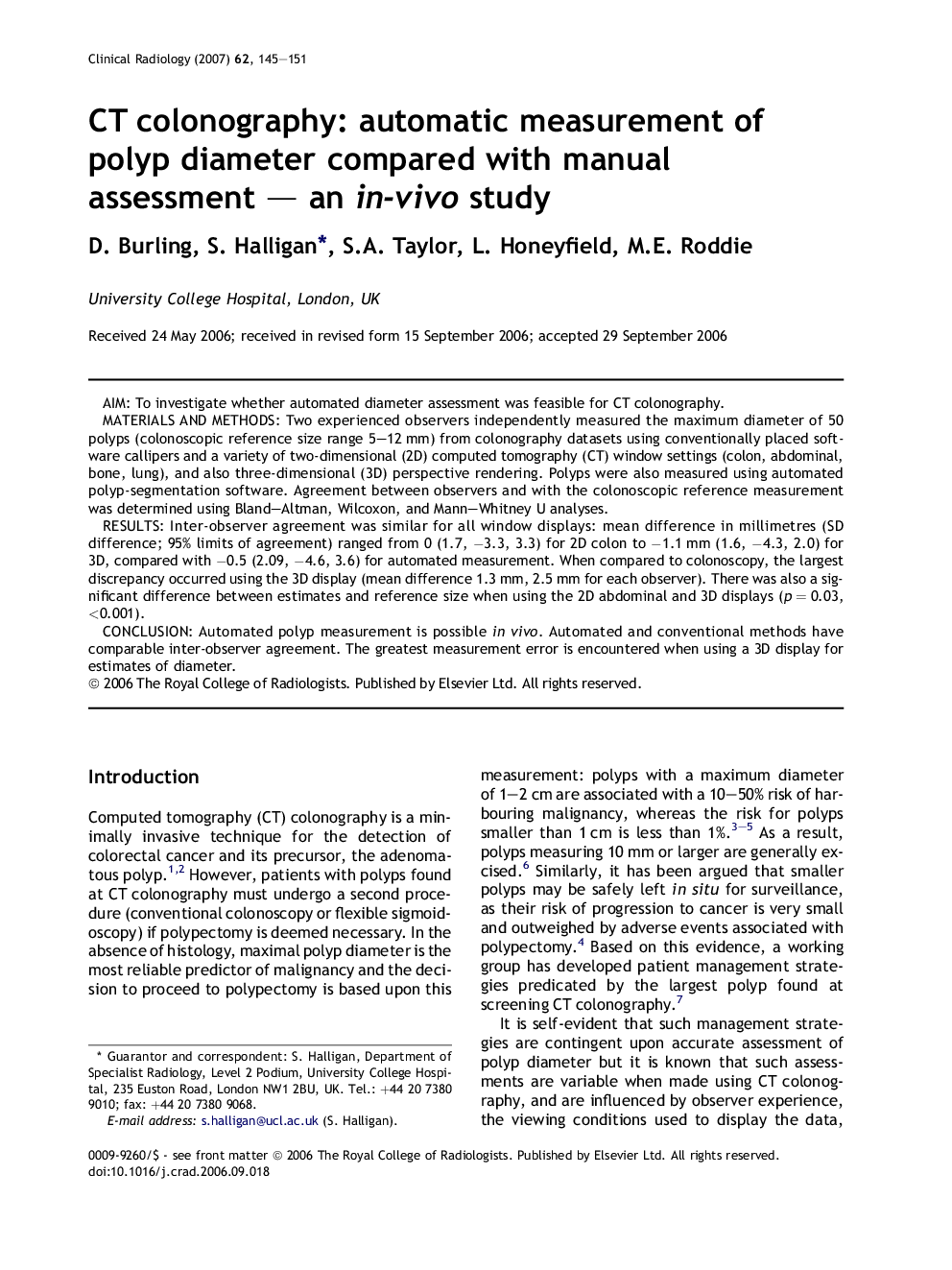| Article ID | Journal | Published Year | Pages | File Type |
|---|---|---|---|---|
| 3984126 | Clinical Radiology | 2007 | 7 Pages |
AimTo investigate whether automated diameter assessment was feasible for CT colonography.Materials and methodsTwo experienced observers independently measured the maximum diameter of 50 polyps (colonoscopic reference size range 5–12 mm) from colonography datasets using conventionally placed software callipers and a variety of two-dimensional (2D) computed tomography (CT) window settings (colon, abdominal, bone, lung), and also three-dimensional (3D) perspective rendering. Polyps were also measured using automated polyp-segmentation software. Agreement between observers and with the colonoscopic reference measurement was determined using Bland–Altman, Wilcoxon, and Mann–Whitney U analyses.ResultsInter-observer agreement was similar for all window displays: mean difference in millimetres (SD difference; 95% limits of agreement) ranged from 0 (1.7, −3.3, 3.3) for 2D colon to −1.1 mm (1.6, −4.3, 2.0) for 3D, compared with −0.5 (2.09, −4.6, 3.6) for automated measurement. When compared to colonoscopy, the largest discrepancy occurred using the 3D display (mean difference 1.3 mm, 2.5 mm for each observer). There was also a significant difference between estimates and reference size when using the 2D abdominal and 3D displays (p = 0.03, <0.001).ConclusionAutomated polyp measurement is possible in vivo. Automated and conventional methods have comparable inter-observer agreement. The greatest measurement error is encountered when using a 3D display for estimates of diameter.
